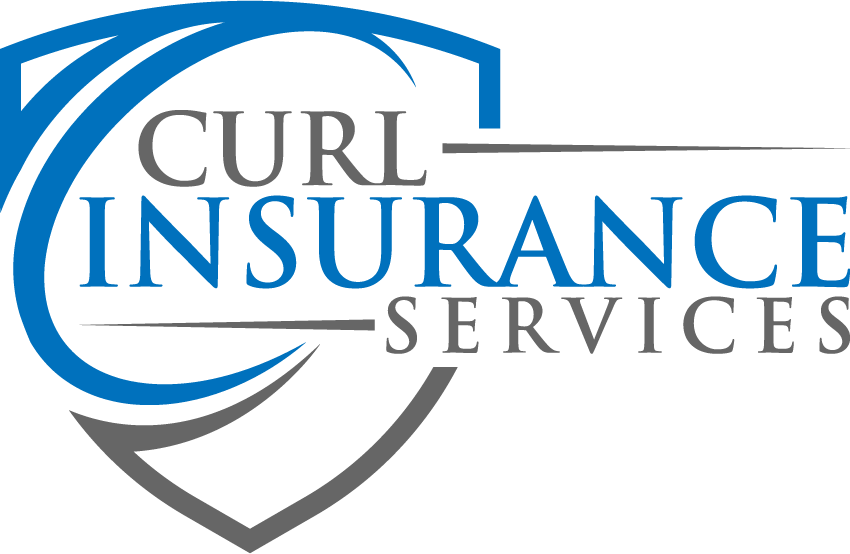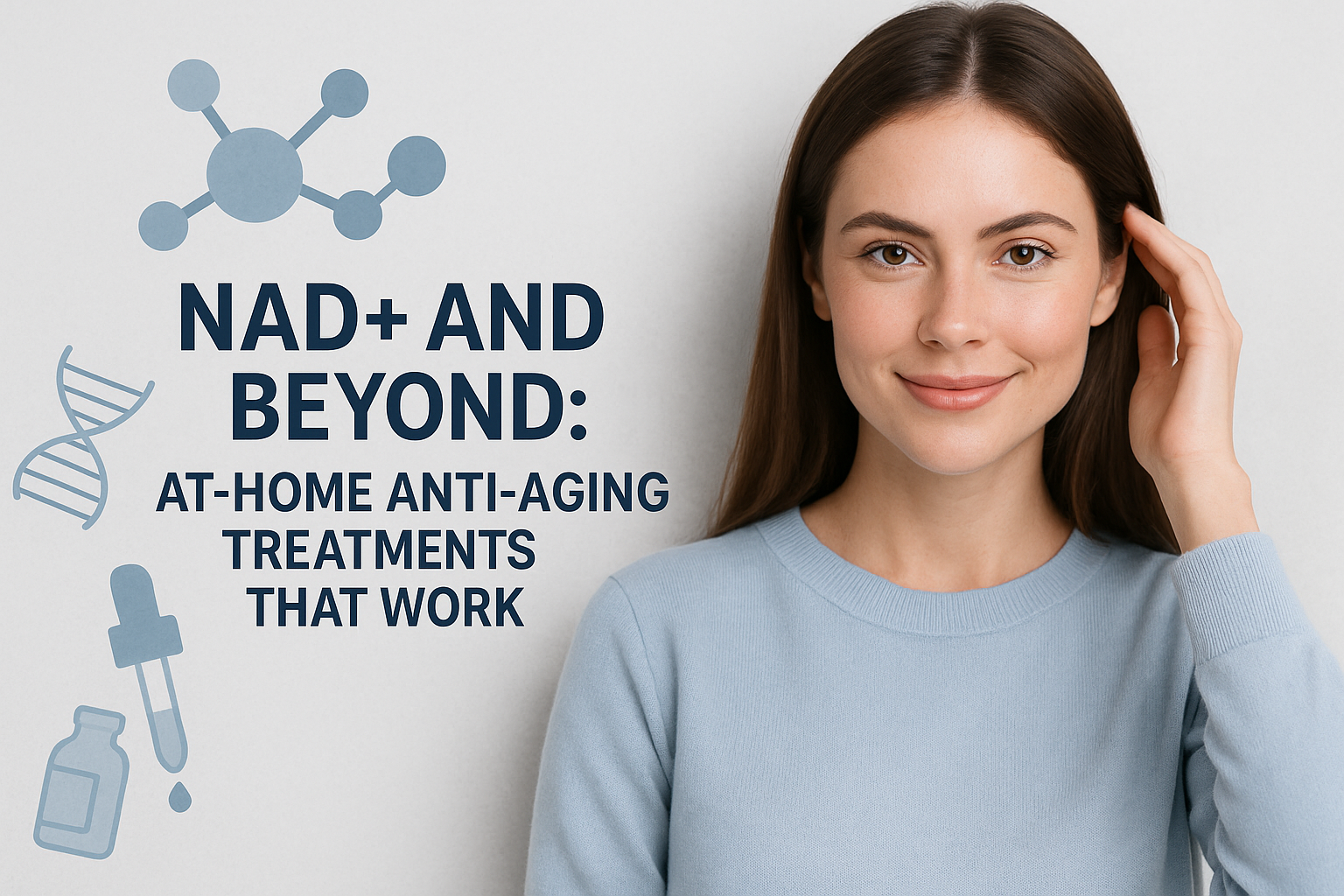NAD+ and Beyond: At‑Home Anti‑Aging Treatments That Work
NAD+ at‑home anti‑aging treatments are surging in popularity—and for good reason. As we age, levels of nicotinamide adenine dinucleotide (NAD+), a coenzyme central to energy production and DNA repair, tend to decline. Interventions that preserve or restore NAD+ can support healthy aging when combined with smart skin care, light‑based therapies, strength training, sleep, and physician‑guided testing. In this guide, we separate evidence‑backed strategies from hype and show how our concierge physicians help you implement them safely at home.
Disclaimer: The following is educational, not medical advice. Work with a qualified physician—ideally via our concierge medicine partnerships—before starting any new treatment.
Why NAD+ Matters—and How to Support It at Home
NAD+ powers cellular energy (ATP production), helps repair DNA, and supports cellular defense mechanisms. Several human studies suggest that precursors—most notably nicotinamide riboside (NR) and β‑nicotinamide mononucleotide (NMN)—can raise NAD+ levels. Outcome benefits vary by population, dose, and duration, which is why a measured, physician‑guided approach works best.
1) Precursors: NR and NMN
What we know: Controlled trials show that NR can reliably increase NAD+ in older adults; similar signals exist for NMN, with good short‑term tolerability. Clinical endpoints (like cognition or insulin sensitivity) are mixed and remain an active area of research. If you supplement, choose physician‑vetted products and monitor biomarkers.
Regulatory note: In the U.S., dietary supplements are not “approved” for safety or effectiveness the way drugs are. NMN’s status has been evolving; consult a clinician and stay current with agency updates.
How our concierge model helps: We coordinate testing (baselines, follow‑ups) and review potential interactions with your medications. We also align any NAD+ strategy with your broader longevity plan—sleep, training, nutrition, and skin health—so you’re not relying on a single lever.
2) In‑Home NAD+ IV Under Medical Oversight
While oral precursors are accessible, some clients prefer periodic NAD+ IV infusions, arranged in‑home with clinical supervision. IV NAD+ is **not** a DIY project: dosing, infusion rate, and side‑effect management all require experienced clinicians. Our concierge physicians oversee protocols and ensure appropriate indications, monitoring, and integration with your overall plan. For a broader view on concierge care, see our Concierge Medicine page.
Pro Skin Strategies: Evidence‑Backed and Home‑Friendly
Topical hype is loud. Here’s what actually delivers at home—and what’s best left to professionals.
3) Daily Photoprotection: The Non‑Negotiable
The single most effective, proven step to prevent and even improve photoaging is daily broad‑spectrum sunscreen (SPF 30+). Consistent daily use reduces clinical signs of skin aging over time and can visibly improve texture and pigmentation over 12–52 weeks. Make this your baseline habit, 365 days a year.
How to use: Apply a nickel‑sized amount to face and a shot‑glass amount to exposed body areas; reapply every two hours with outdoor exposure. Consider tinted formulas to help cover visible light as well.
4) Retinoids: The Gold Standard for Photoaging
Prescription retinoids (e.g., tretinoin) remain the best‑studied topical for photoaged skin, with evidence for improvements in fine lines, dyspigmentation, and texture. Over‑the‑counter retinol helps some users but is generally less potent. Start low, go slow, moisturize, and use nightly as tolerated.
5) Red‑Light (Photobiomodulation) at Home
At‑home red‑light devices expose skin to specific wavelengths that may stimulate mitochondrial activity and support collagen remodeling. Reviews describe modest, cumulative benefits for wrinkles and texture when used consistently; results vary by device quality and protocol. Aim for several sessions per week for 4–8 weeks, then maintain.
6) What to Be Cautious About: At‑Home Microneedling
Microneedling can be effective in‑clinic, but home devices increase risks—irritation, infection, scarring—if technique and sterilization are not meticulous. For collagen induction or deeper concerns (acne scarring, pronounced laxity), reserve the procedure for trained professionals.
Beyond the Bathroom Shelf: Whole‑Body Anti‑Aging You Can Do at Home
Longevity is a systems game. The most reliable at‑home “treatments” are boringly powerful—and they compound.
7) Strength Training for Healthspan
Regular muscle‑strengthening exercise is consistently associated with lower all‑cause mortality in large cohorts and meta‑analyses, especially when combined with aerobic activity. Two to three sessions per week (30–60 minutes total) captures most of the benefit curve.
At‑home execution: A compact adjustable dumbbell set, bands, or a kettlebell is enough. Focus on big‑rock moves: squats, hinges, pushes, pulls, and loaded carries. Protect joints with good form, and progress gradually.
8) Sleep: The Most Potent (and Ignored) Recovery Tool
Adults should aim for roughly 7–9 hours of sleep per night. Chronically sleeping less than 7 hours is linked with higher risks of cardiometabolic disease. Build sleep like a training block: consistent schedule, cool/dark room, and a 60–90 minute tech wind‑down.
9) Protein‑Forward, Plant‑Rich Nutrition
Muscle is a longevity organ. A practical at‑home approach is to anchor each meal with high‑quality protein, then stack plants (fiber, polyphenols) for metabolic health. If you’re pursuing time‑restricted eating or fasting, do it with physician oversight—especially if you have glucose, thyroid, or adrenal concerns. Our concierge physicians align your eating pattern with training, labs, and sleep to avoid under‑fueling.
10) Strategic Supplementation (With Testing)
Supplements are not a substitute for training, sleep, or sunscreen. They’re an optional layer. Consider a physician‑guided multinutrient plan that prioritizes safety and measures outcomes. For NAD+ specifically, your clinician may recommend a trial period of NR or NMN with pre/post labs to verify effect and tolerability.
Building a Smart At‑Home Protocol: The 12‑Week Plan
You don’t need a dozen gadgets to look and feel younger. You need a tight routine that respects biology, stacks habits, and measures progress. Use the blueprint below as a starting point; our team customizes it to your goals.
Weeks 1–2: Foundation
- Photoprotection: Daily SPF 30+ every morning; reapply outdoors. (Non‑negotiable.)
- Retinoid onboarding: 2–3 nights/week of a gentle retinoid; buffer with moisturizer to reduce irritation. Build to nightly over 4–8 weeks.
- Sleep: Fix bedtime/wake time; target 7–9 hours. Start a wind‑down routine.
- Training: Two strength sessions (full‑body), plus 90–150 minutes of brisk walking or low‑impact cardio.
- Baseline labs (with physician): Metabolic panel, lipids, inflammatory markers; if NAD+ is a focus, plan pre‑/post‑testing for any precursor trial.
Weeks 3–6: Layering Benefits
- Red‑light therapy: Add 3–5 sessions per week following device instructions; track skin changes with photos under consistent lighting.
- Strength: Add load or reps weekly; keep sessions efficient (30–45 minutes).
- NAD+ precursor trial (if appropriate): Physician‑guided NR or NMN for 6–8 weeks; monitor subjective energy and objective markers when feasible.
- Nutrition: Hit a personalized protein target (commonly 1.2–1.6 g/kg/day); emphasize fiber‑rich plants to support the microbiome.
Weeks 7–12: Optimize and Measure
- Retinoid maintenance: Work toward nightly use as tolerated; maintain sunscreen daily.
- Red‑light maintenance: Continue 2–3 sessions/week; evaluate before/after progress photos.
- NAD+ reassessment: Repeat labs (if used); discuss continuation or cycling with your physician.
- Training: Lock in a sustainable schedule (2–3 strength + low‑impact cardio).
- Sleep: Audit your average duration; adjust routine to keep ≥7 hours.
Don’t Waste Time (or Money): Overhyped At‑Home “Anti‑Aging”
- Unverified miracle creams: If it’s not a retinoid or well‑supported antioxidant, be skeptical of big claims with no peer‑reviewed data.
- DIY invasive procedures: Deep microneedling or peels are best left to professionals; the risk‑reward at home isn’t favorable.
- Supplements without testing: If you can’t measure it (or at least track meaningful outcomes), you’re guessing.
Measuring What Matters: Biomarkers and Biological Age
Subjective improvements are nice; objective data is better. Our concierge physicians coordinate biomarker tracking (inflammation, glycemic control, lipids, thyroid), hormone panels when indicated, and optional biological age testing. These metrics help differentiate what’s working from what’s just wishful thinking.
When NAD+ is a focus, testing before and after a defined trial window confirms whether a precursor actually moves your numbers—and whether you feel a commensurate change in energy or recovery. Several trials confirm that NR or NMN can raise NAD+ levels; real‑world benefits depend on the person. We tailor, test, and iterate.
How We Bring Elite Longevity Care Home to You
With Curl Insurance Services concierge medicine, you don’t have to navigate longevity alone—or chase scattered appointments across town. We coordinate:
- Personalized plan design: A physician‑led protocol that layers NAD+ at‑home anti‑aging treatments with training, sleep, skin care, and nutrition.
- In‑home services: When appropriate, clinician‑supervised NAD+ IV, red‑light setup guidance, and mobile lab draws.
- Testing and feedback loops: Baselines, follow‑ups, and outcome reviews so you can see your progress.
- Premium support: White‑glove coordination, direct access, and discreet care that respects your time and privacy.
Want more longevity insights? Explore our recent guides: Biohacking for Longevity and the Top 10 Longevity Trends for Elite Health in 2025.
Quick‑Start Checklist (Save This)
- Apply SPF 30+ every morning, year‑round. Reapply outdoors.
- Use a retinoid nightly as tolerated (start 2–3 nights/week).
- Add red‑light sessions 3–5x/week for 4–8 weeks; maintain 2–3x/week.
- Strength train 2–3x/week; add daily walking.
- Sleep 7–9 hours with a consistent schedule.
- Consider a physician‑guided trial of NR or NMN with before/after labs.
- Track outcomes monthly (photos, training logs, sleep, biomarkers).
Frequently Asked Questions
Is NAD+ safe to take long‑term?
Human studies have generally found NR and NMN to be well‑tolerated in the short to medium term, and both can raise NAD+ levels. Long‑term safety and disease‑specific benefits are still being defined, so supplement under physician supervision and reassess regularly.
Do I need fancy devices to age well?
No. The highest‑ROI “devices” are weights and blackout curtains. Sunscreen, a retinoid, strength training, and high‑quality sleep do more heavy lifting than any gadget. Add red‑light if you want an adjunct for skin quality and recovery.
Can I do microneedling myself?
We strongly recommend professional care for microneedling. At‑home devices carry infection and scarring risks when used incorrectly or without proper sterilization.
How fast will I see results?
Photoprotection is immediate in preventing UV damage; visible improvements typically show within 12–16 weeks. Retinoids and red‑light often need 6–12 weeks of consistency. Strength, sleep, and nutrition build results that are obvious within 90 days and meaningful over years.
Schedule a Concierge Consultation to design your personalized longevity plan today.

